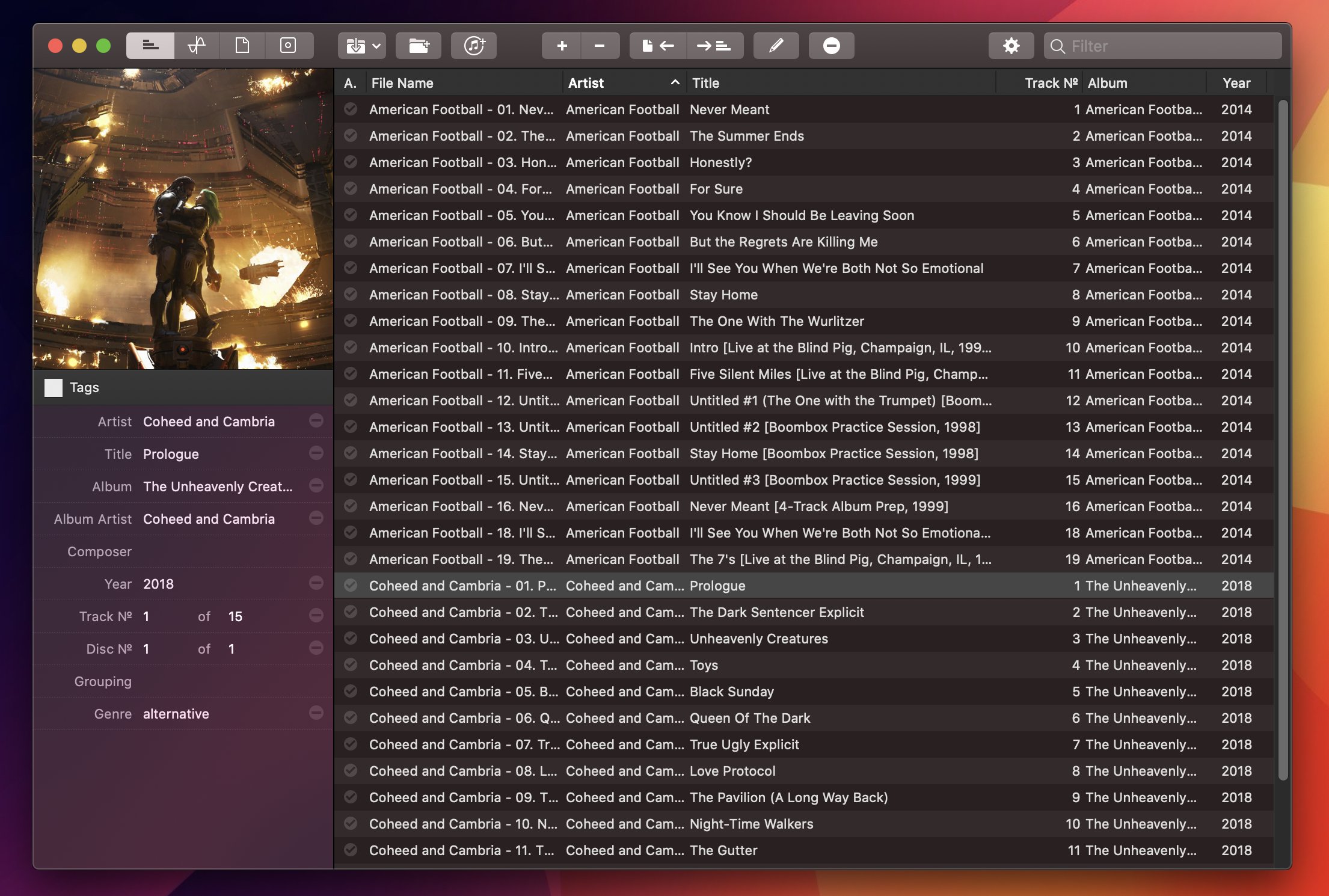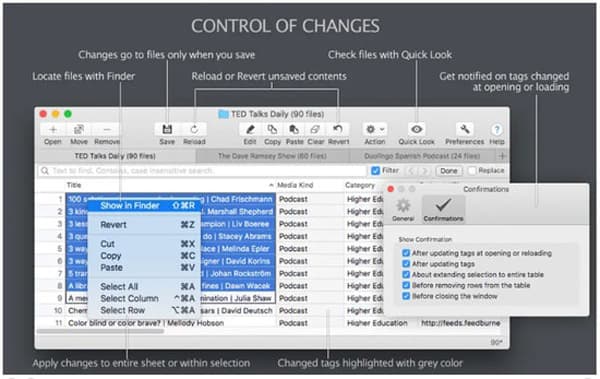

However, as we are just starting to collect the acoustic fingerprints, fewer files will be initially recognized. Submitting acoustic fingerprints will allow MusicBrainz to automatically identify these tracks in the future, so that other people using the Tagger can benefit from the work you have done.Īs the community uses the Tagger application, more and more files will be automatically recognized. As you tag the files in your collection that MusicBrainz didn't recognize, you submit the acoustic fingerprints (TRM ids) of your files back to the server. TagScanner is a powerful tool for the job and is great because it doesn’t try to take over your systems media playback functions or clutter your system with icons, context menus, and background processes.The MusicBrainz Tagger application allows you to automatically look up the tracks in your music collection and then write clean metadata tags (ID3 tags or Vorbis comment fields) to your files.
MAC AUTOMATIC MUSIC TAGGER MANUAL
Manual tagging is also the only way to go if you have obscure artists or remix albums. While manual music organization takes longer than automatic tagging software, you have much more control over how the songs are named and what information is stored in the tag.

Select the files, the type of playlist, and then click export to create the playlist file. Once the music is tagged and renamed you can easily select the list maker tab and export the desired music to any playlist format available. If everything looks good click rename and an OK status should show up next to each successfully renamed song. When you have the format and transform options set the way you want, click preview to see how the tracks are going to be affected when you rename the files. There are also options to restructure the directory tree based on tag information and trim file name length if your operating system or playback device does not support long filenames. Use the legend information for attributes that should be included in the filename and check any boxes in the text transform window to replace special characters like & and %20, move “The” to the end of the band name, or to capitalize the first letter in each word. Once all the music is tagged to your satisfaction, click on the music renamer tab and fill out the format exactly how the physical files should be named. If manual tag information is needed click on the tag editor tab, select the song or album that needs editing, and fill out any desired information on the right in the correct field.ĭepending on what file format the music files are in there will be a load of tag information that can be added to the songs manually. If you are satisfied with the tag information click save to write the information to the files. This is the last step before writing changes to disk so make sure the album tag is correct. Any changes that are going to be made will show up in blue. Select the correct album information on the right and click preview to see how the the file information will change. To verify the correct songs are going to be tagged, right click on any file and click play to preview the song with the built in player, or open file location to find the files you are tagging. TagScanner will automatically search for album information you can set which freedb server you want to use from the TagScanner preferences.īefore writing any information to the files click on the gear icon to change settings for embedding cover art and updating the tag information. Select an album or song on the left and then drop down the search window on the right to specify what you want to search for. It is easy to start with the automated scanning first and then move to manual fixing where needed. Once the information loads, click on the tag processor tab at the top.


 0 kommentar(er)
0 kommentar(er)
